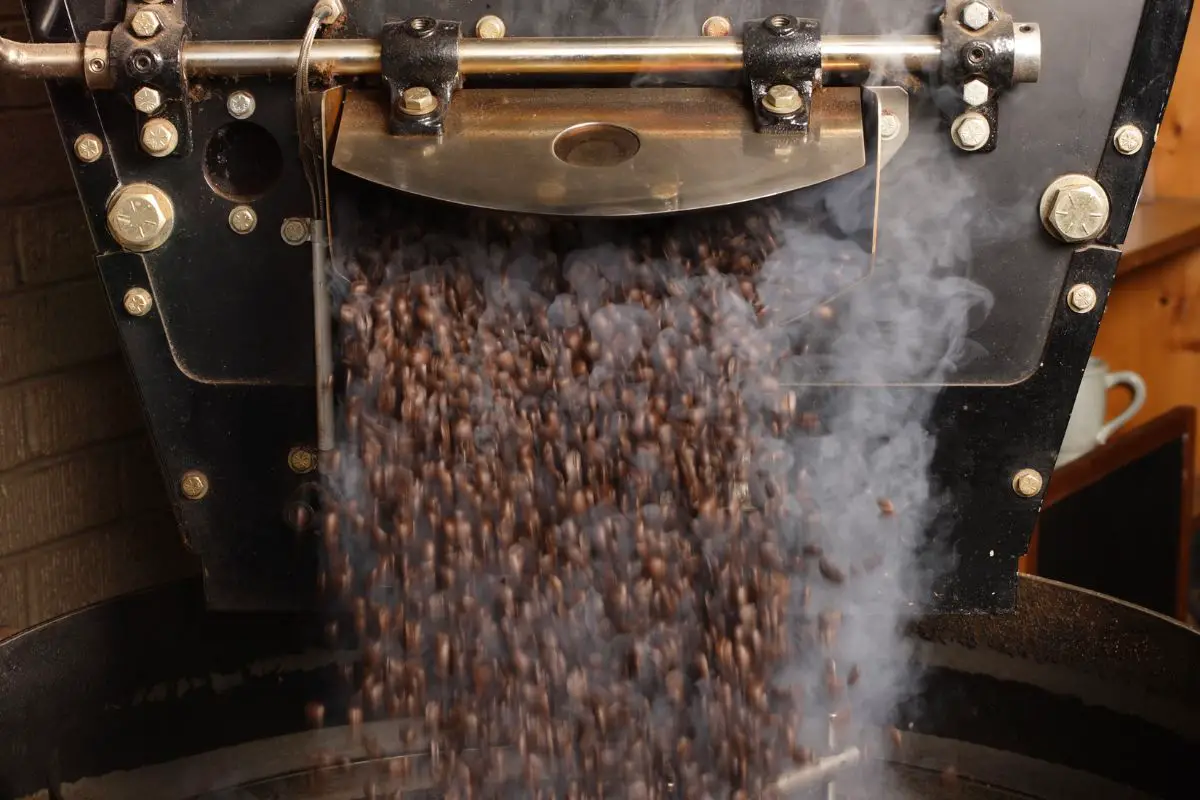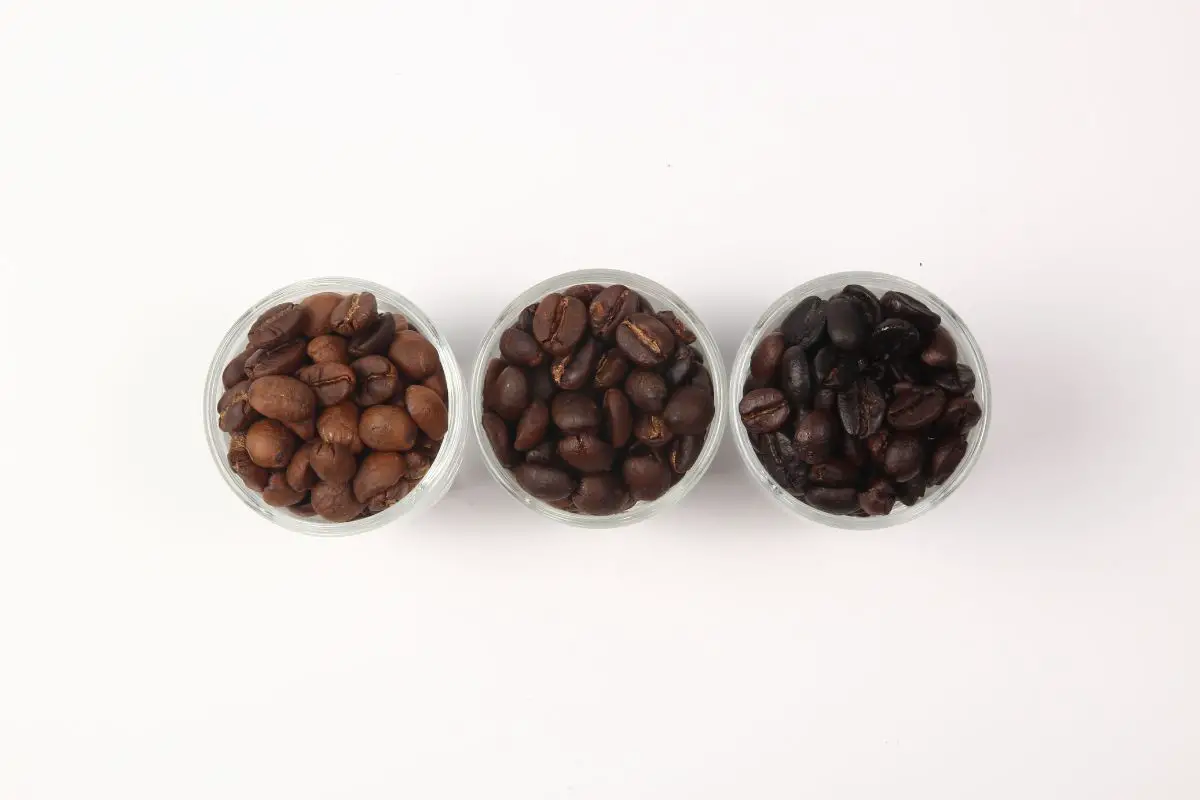Coffee beans undergo several processes before reaching your mug. One of the most important processes is the roasting process. As a coffee enthusiast, it’s important to know your cup of joe’s journey. This article takes you through the roasting process. We’ll discuss the reasons why your coffee beans are roasted and what’s involved in this process. Read on!

Why Are Coffee Beans Roasted?
Coffee beans are roasted to give them the complex flavors and aromas that you love in your cup of joe. Unroasted coffee beans are merely beans – no flavor and no aroma. They are basically seeds contained in the coffee cherry. Unroasted coffee beans contain high concentrations of compounds such as caffeine and antioxidants, but they exclude the flavors and aromas needed to make a cup of coffee.
Unroasted coffee beans have a complex structure – hard, insoluble, and tasteless. When these beans are exposed to different degrees of heat, the complex structure disintegrates and the coffee beans release compounds such as caffeine, minerals, carbohydrates, amino acids, lipids, water, and proteins. However, only a percentage of the compounds are lost, and not all the compounds. In return, the coffee beans obtain caramel, chocolate, fruity, and flower flavors from the roasting process.
Additionally, the intense heat used during the roasting process breaks down the hard outer shell of the bean, making it porous, thus allowing water to access the coffee beans compounds during the extraction process. Generally, coffee beans are roasted to add flavors and aroma to the beans.
Unfortunately, when coffee beans are roasted, they begin to lose flavor quickly when exposed to air as a result of oxidation. Therefore, you need to purchase freshly roasted coffee beans to enjoy a flavorful cup of joe. Additionally, store the remaining freshly roasted coffee beans in an airtight container far away from direct sunlight, moisture, and air.
The Roasting Process
Roasting involves heating the green coffee bean to develop flavor, and aroma and increase the solubility of the bean. When coffee beans are roasted they change their color from green to brown. The different types of roasts affect the flavor profile of your cup of joe. The coffee roasting process involves three main stages. They include:
- The drying stage
- The browning stage
- The developmental stage
Let’s take a look at what happens in each stage.
1. Drying Stage
The drying stage is the most important coffee bean roasting stage since it sets the foundation for the other roasting stages. Usually, unroasted coffee beans contain 8-12% humidity. The drying stage involves removing the moisture in the coffee beans before the actual roasting process. At this stage, coffee beans are dried using a traditional drum roaster for 4 to 8 minutes. The roaster is heated and the coffee beans are dried at about 20-130 degrees Celsius until the water evaporates. The temperature used at this stage is crucial to avoid overheating the coffee beans. By the end of the drying process, the beans are clear of water, thus the coffee bean will roast more evenly. Not to mention, this stage is crucial since the bean develops energy that’s required in the developmental stage.
2. Browning Stage
The browning stage is also known as the Mallard reaction. From 130 degrees Celsius, the coffee beans begin to roast. While roasting, they slowly turn yellow then caramel-like brown. The coffee beans now begin to smell like baking bread. The browning stage is a catalyst for the formation of volatile chemical compounds that evaporate in the air, thus contributing to the aroma of your coffee. Reducing sugars and amino acids in the coffee beans react to create different aromas as well as color compounds known as melanoidin. Additionally, the drying of the beans continues at this stage. At the browning stage, most coffee roasters slow the process down to ensure maximum development of flavors. By the end of this stage, the coffee bean starts to pop, and the developmental stage begins.
3. Developmental Stage
At this stage, the coffee beans have developed enough energy from the previous stages that make the bean explode. The first and second cracks occur at the developmental stage.
First Crack
The first crack is the beginning part of the exothermic reactions. The energy has built up inside the bean and the bean breaks from the inside out. The first crack is an audible sound that’s similar to popcorn popping. If you were roasting your coffee beans for filter coffee, you don’t have to wait for the second crack. At this point, your beans are ready
Second Crack
If you’re roasting your beans for espresso or dark roasts, this stage is very critical. This stage involves a full breakdown of the bean. The pop is a bit finer than that of the first crack. From this stage, you’ll notice a shiny surface as the oils begin to emerge from the coffee beans. The bean’s flavor profile has developed depending on the roast time and roast degree. Additionally, your beans are fully roasted by this stage.
4. Cooling Stage
After roasting the coffee beans, they need to be cooled to stop the roasting process. Most coffee roasters have a cooling button to help with the cooling process.
5. Storage
After the beans have cooled, they need to be stored. After the roasting process, the beans still contain carbon dioxide that needs to be removed (degas) since it affects the taste of your coffee. Therefore, you need to store your coffee beans in a way that carbon dioxide exits and oxygen doesn’t come in. The reaction of roasted coffee beans with oxygen will lead to a loss of flavor from the beans. Equally important, coffee beans are considered best between 3rd and tenth days after roasting. Therefore, you can store your coffee beans in a valve or a can with a valve to degas.
Different Types of Coffee Roasts

Different types of roast are developed during the developmental stage of the roasting process. They include:
- Light roasts
- Medium roasts
- Medium-dark roasts
- Dark roasts
Light Roasts
Light roasts are brown with no oily surface. They are acidic and contain more caffeine, unlike the other roasts. Light roasts are created before the first crack at a temperature of between 356 to 401 degrees Fahrenheit. Some examples of light roasts include:
- Cinnamon roast
- Light City
- Half city
- New England roast
Medium Roasts
Medium roasts have a medium brown color and fuller body compared to light roasts. They are developed after the first crack but before the second crack at a temperature between 410 to 428 degrees Fahrenheit. Examples of medium roasts include:
- City roast
- Breakfast roast
- American roast
- Regular roast
Medium – Dark Roast
Medium – dark roasts are fuller, unlike the previous roasts. Additionally, they begin to have an oily surface. They look darker in appearance, unlike medium and light roasts. Medium to dark roasts is achieved at the beginning of the second crack or the middle of the second crack depending on the variation. They are developed at temperatures between 437 to 446 degrees Fahrenheit. Examples of medium to dark roasts include:
- Full city roast
- Vienna roast
- After Dinner roast
Dark Roasts
Dark roasts have a dark brown appearance that’s close to black shade. Additionally, they have an oily sheen on their surface. Dark roasts are developed at the end of the second crack or beyond it. They are achieved at a temperature of 464 to 482 degrees Fahrenheit. Examples of dark roasts include:
- Italian roast
- Continental roast
- French roast
- Spanish roast
- Espresso roast
- New Orleans roast
Conclusion
Coffee beans are roasted to give them their intense flavors and aromas. Green coffee beans are merely beans without aroma and flavors. They have to undergo roasting to make them ready for brewing. The different types of roasts are a result of the different roasting times and the roast degree. The coffee roast to choose from depends on your taste and preferences. Additionally, when buying coffee beans from the store, buy freshly roasted beans. Coffee beans that have been on the shelves for a long period may have lost their flavors. Additionally, store your coffee beans properly to avoid chances of oxidation.
Related Articles